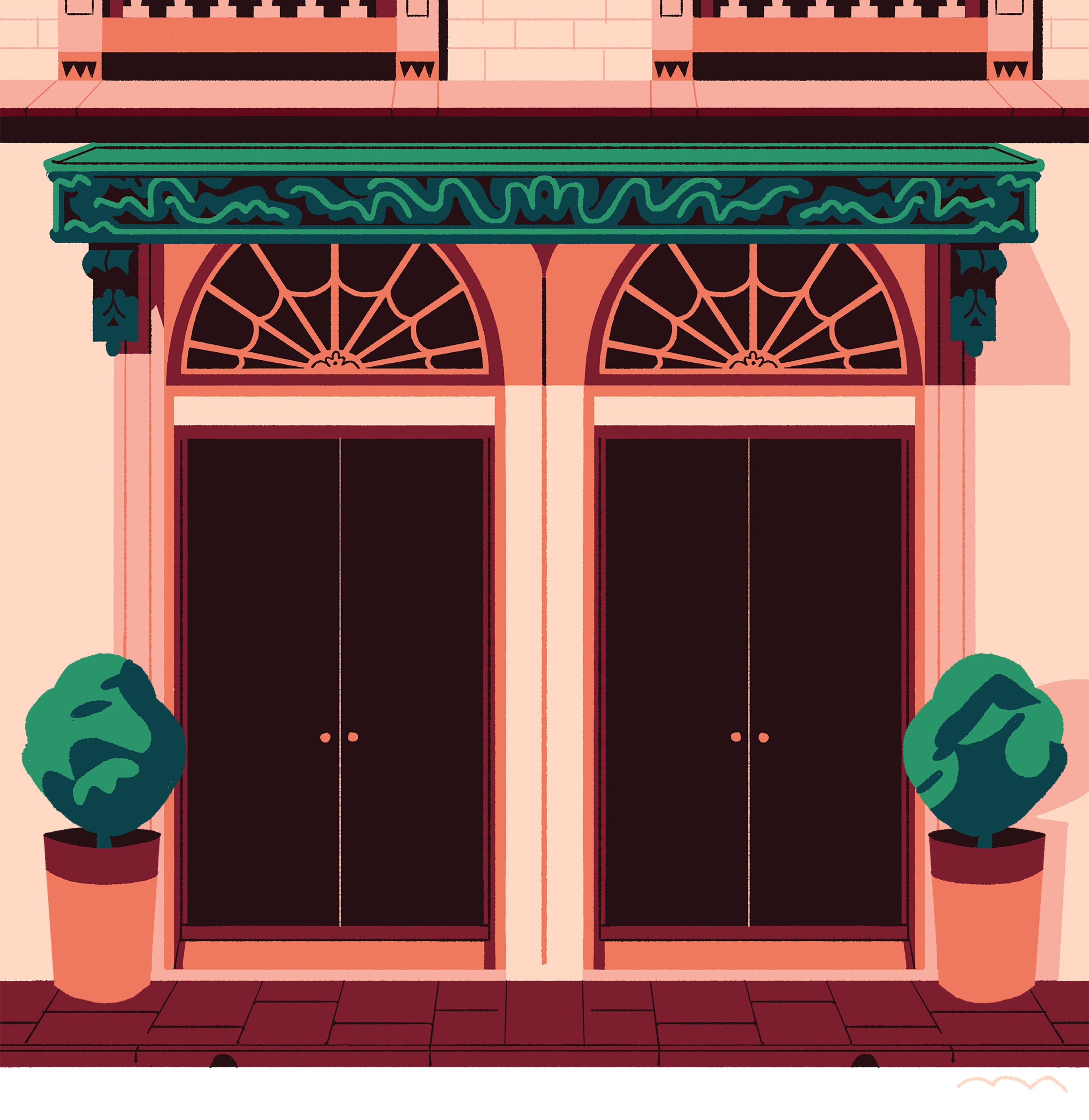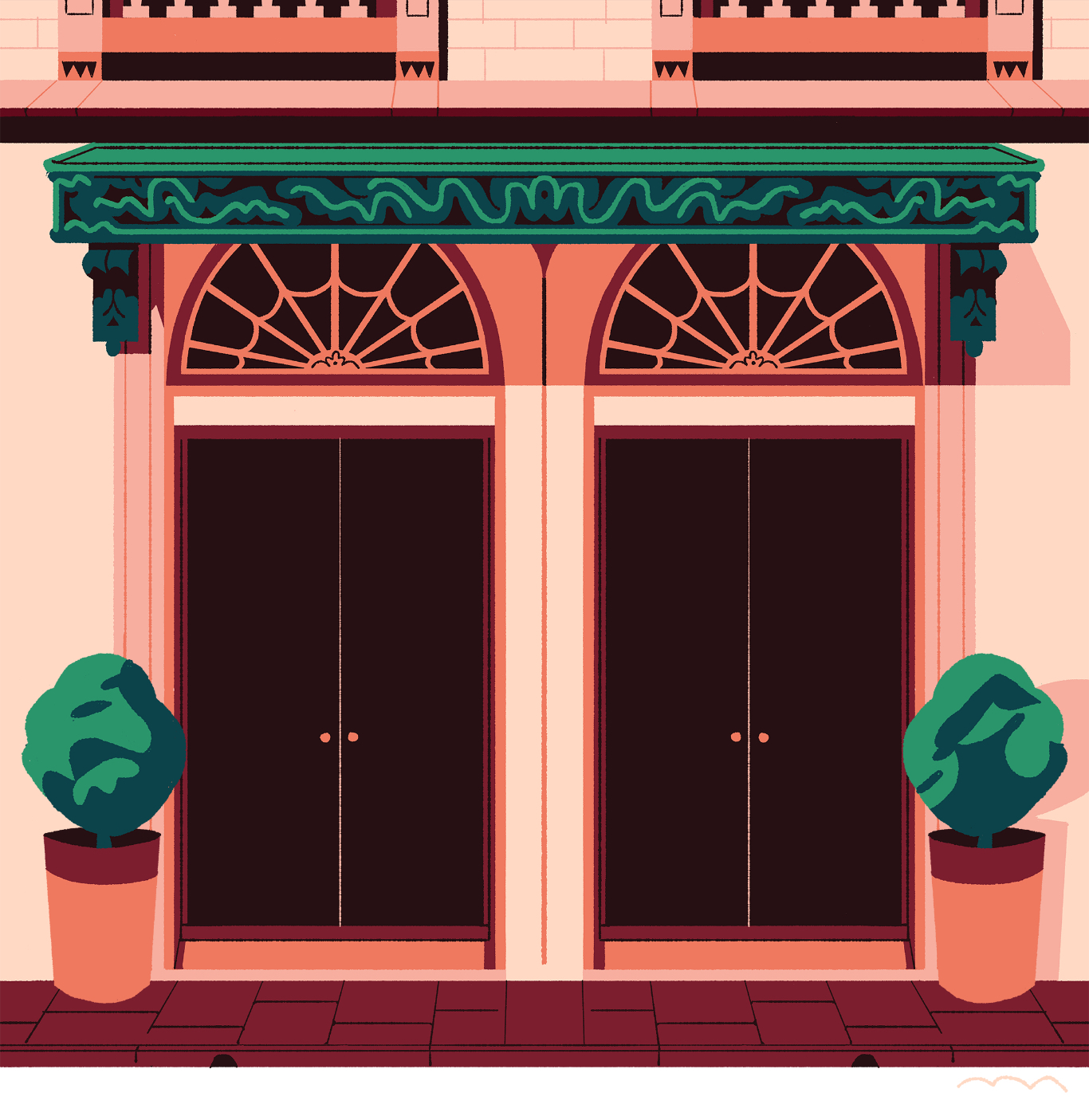

presents
WITH YOUR EYES CLOSED
OOne, two, three, four, five.
Think of all the Campari posters you’ve seen over the years.
How many come to mind?
Now keep your eyes closed and picture the white front of a building of, say, twenty storeys, one of those you need to bend your head backwards to see in its entirety.
Picture it white,

They say that white is actually the color of the devil, that before being painted it sends even the most accomplished artists into a panic. Now picture Marcello Dudovich’s signature touch on the first great work marking the first time Campari made a splash in the history of art, with the famous kiss poster from 1901, the artistic archetype of passion, a red that illuminates, highlights and strikes with its aesthetic predominance.
Coppia al Tabarin is a poster that’s more like a boomerang: you throw it, and it comes back with all eyes still on it. And the further you throw it, even as time goes on, the more attention it gets.
Continue to keep your eyes closed
and picture a

wrapped in a spiraling orange zest
It comes from the talent of Leonetto Cappiello, an illustrator who handed Campari a true design genius: Fortunato Depero, the inventor of the single-dose Campari soda bottle.
Its Squisito al seltz, a futurist oil painting, influenced visual advertising so much that it went down in history as a milestone not only in advertising but also in art.
It was 1926, but the work was so avant-garde that it could easily have been 2000, what with its dynamism of shapes, affinity with Duchamp’s Dadaism and, above all, the desire to free art from the sterile walls of museums and make it for everyone, introducing it into people’s day to day lives, as well as in the streets.
At a time in which street art did not yet exist, Campari had already invented it. Ultimately, what was a Depero poster down the street if not street art?
We could talk for hours of the worldwide success, the global reach, about how much this type of advertising made its mark. But please keep picturing, with your eyes shut, the wall of that imaginary building, and find the room for a work that made history yet again: Manifesto Campari.
On a scale from one to ten, here we reach one hundred thousand.



The M1 line of the Milan Metro is opened.
Bruno Munari designs an almost kaleidoscopic poster, with a red background, full of Campari graphic logos. Now picture it hung on white, but also in the prestigious MoMa archives.
Still with your eyes closed, watch as other works fill up that wall, obscuring the white plaster with more and more red. Little by little, other works by Mora, Tallone, Sacchetti, Sinopico get added. Then the great paper silhouettes artist Ugo Mochi, followed by Franz Marangolo, Dudovich, the Sputnik by Nino Nanni.
And, last but not least, how could we not mention Crepax? A great assortment of pictures, all hung in this big open-air gallery, which only the visionary perspective of a bottle so devoted to art could conceive.
Now take a step back from that wall and imagine it shining in the light of dusk, imagine it pierced by looks hungry for beauty, immersed in the silence of awe
Now, open your eyes, and think of the many brands that will continue to illuminate your retinas forever, just like Campari does with its iconic posters.
It’s a countdown, a downward count.
It’s not much, not even ten. Maybe less.
Five, four, three, two.






